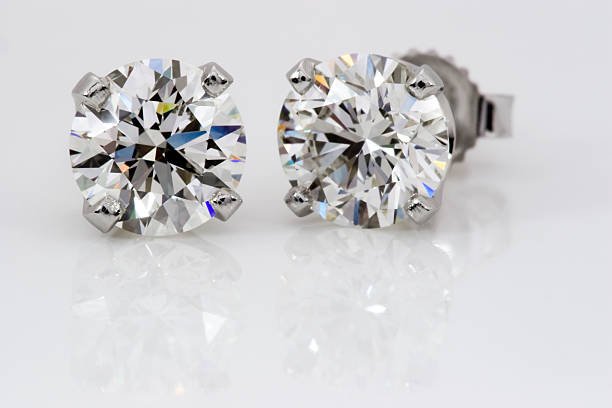Factors in Determining Diamond Quality All Entries

Many mysteries surround diamonds, but quality is not one of them. A professional GIA-certified gemologist can give you a precise breakdown of a diamond's value and quality. While colorless diamonds are the best and most rare on the planet by professional standards, other factors influence appeal and demand. Here's a look at how the Geological Institute of America defines diamond quality.
Why All Diamonds Aren't Equal
Diamonds come in many shapes, sizes, and colors and you'll never find two that are exactly alike. Once they are cut and polished, you'll find diamonds that fall in similar price ranges, but each gem is still unique. Diamonds that exhibit rare qualities are much more valuable than those that have common characteristics.
Since the 1950s, GIA has used a specific system for determining the quality and value of any given diamond. This standard grading system helps settle disagreements quickly by emphasizing the "4Cs," which are clarity, color, cut and carat weight.
How Color Tips the Scale
Even though every diamond is unique, the factors of clarity, carat weight and cut can be very similar. When that's the case, color can be the deciding factor of the gem's value. The closer it is to colorless, the more valuable. The nature of impurities is what gives a diamond its color otherwise, so the lighter the color, the less valuable it is. Diamonds with impurities tend to have a color range from light yellow to brown.
The GIA Color Scale uses sequential letters of the alphabet starting with D and ending with Z. The colorless range is represented by D, E and F. On the opposite end of the spectrum are light diamonds represented by letters S through Z. In between these extremes are three sections: near colorless (G-J), faint (K-M), and very light (N-R). While common diamond colors include blue, white, yellow, and orange, these colors may appear differently under different types of light.
Taking the 4Cs Into Account
No one factor usually determines diamond quality unless it's a very big diamond, which is extremely rare. Naturally, larger diamonds will have a higher carat weight, as one metric carat equates to .02 grams, while 142 carats makes up an ounce. But it's still possible for clarity grade to be affected by a specific factor.
The GIA Clarity Scale is divided into six sections: Flawless, Internally Flawless, Very Very Slightly Included (VVS), Very Slightly Included (VS), Slightly Included (SI) and Included (I). At one time the term "imperfect" was usued for flaws, but these days the GIA uses the term "included." The inclusion sections - or those gems that exhibit flaws - are further subdivided into segments.
In many ways the diamond's cut is the most subjective variable in the gem's value. It's the human part of the equation based on craftsmanship. It's also the final piece of the puzzle that turns a diamond into a finished product. The cut is what adds customized refined artistry to nature. It has a profound effect on how light shines on the gem, which defines overall brightness, as well as fire and scintillation.
Fire can be thought of as the flashes of color that create hypnotic optical effects on a diamond. Scintillation defines the areas of light and dark color shades. The contrast between dark and light colors contributes to a diamond's appearance of shape, sharpness, and design patterns.
Conclusion
The 4Cs mentioned are what determine the quality and value of a diamond. This knowledge will help you objectively evaluate your diamond choices. Contact us at Ralph Mueller & Associates for more information about diamond quality and other considerations for collecting unique jewelry.